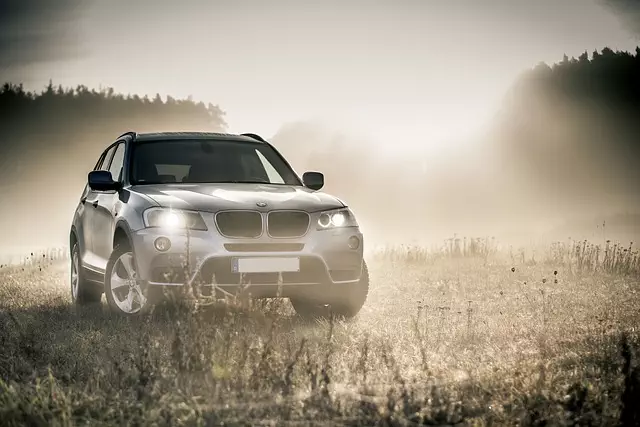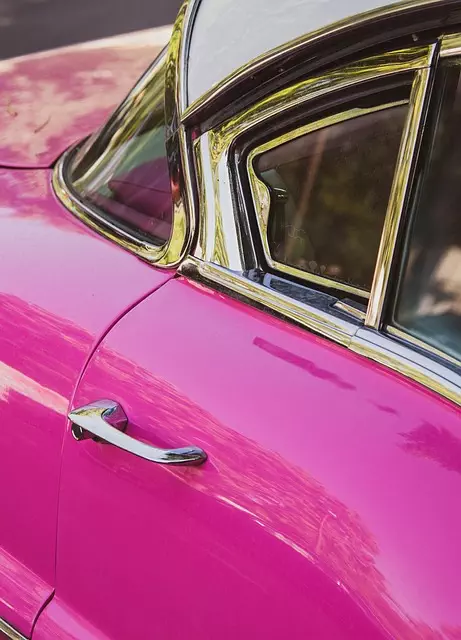Soundproofing off-road vehicles enhances driver comfort and legal compliance by reducing engine and road vibration noise. DIY enthusiasts or professionals use materials like foam panels, matting, and blankets to target problem areas. While DIY methods are available, professional installation offers optimal coverage and minimizes residual noise, crucial for urban or residential use. Car sound deadening improves safety awareness, retains vehicle value, and provides better temperature regulation. For off-road vehicles, durable insulation like fiberglass mats, foam padding (DIY) or dynamic mat, spray foam, and noise wraps (professionals) are recommended.
“Uncover the world of off-road vehicle soundproofing and transform your rugged ride. This comprehensive guide explores the art of minimizing noise for a quieter, more comfortable journey. From understanding the basics of car sound deadening to choosing the right materials, we cover it all. Learn why soundproofing is essential for both driver enjoyment and vehicle longevity.
Discover the benefits, from reduced cabin noise to enhanced off-road performance. We provide DIY enthusiasts with a step-by-step guide and offer insights into professional installations. Optimize your off-road experience with effective car sound deadening techniques, whether in Toledo or beyond.”
- Understanding Off-Road Vehicle Soundproofing: The Basics
- Why Soundproof Your Off-Road Vehicle? Benefits and Considerations
- DIY Car Sound Deadening: Tools, Materials, and Step-by-Step Guide
- Professional Sound Deadening Installation: What to Expect and How It Impacts Performance
- Choosing the Right Soundproofing Materials for Maximum Effectiveness
Understanding Off-Road Vehicle Soundproofing: The Basics
Off-road vehicles, with their robust designs and powerful engines, often come with an equally impressive array of noise. Soundproofing is a crucial aspect for both driver comfort and legal compliance. It involves reducing unwanted noise, particularly engine and road vibrations, to create a quieter interior environment. This is especially important in off-road vehicles used in urban areas or near residential neighborhoods.
For those considering DIY car sound deadening Toledo or professional sound deadening installation, the basics revolve around using sound-absorbing materials. These can range from simple foam panels to more complex systems incorporating specialized matting and blankets. The approach should target problem areas like the engine bay, roof, doors, and floor pans. Professionals leverage their expertise to ensure optimal coverage and minimize residual noise, while DIY enthusiasts can find numerous guides and resources to help them achieve similar results.
Why Soundproof Your Off-Road Vehicle? Benefits and Considerations
Off-road vehicles, with their robust designs and powerful engines, are engineered for rough terrains but often lack consideration for interior noise levels. Soundproofing your off-road vehicle offers a unique set of advantages that enhance both driver comfort and overall ownership experience. One of the primary reasons to soundproof is to reduce the noise generated by the engine, transmission, and terrain interaction, making long drives more enjoyable. This is especially beneficial for those who frequently travel on unpaved roads or face challenging weather conditions.
By implementing car sound deadening in Toledo, whether through DIY methods or professional installation, you can significantly cut down on cabin noise. This not only makes the ride quieter but also contributes to better safety by allowing drivers to hear external sounds more clearly, crucial for awareness while navigating unpredictable off-road paths. Moreover, a well-soundproofed vehicle retains its value better due to reduced interior wear and tear, making it an investment that pays off over time. For those considering professional sound deadening installation, the benefits extend to improved thermal insulation, which can lead to more comfortable cab temperatures during extreme weather conditions.
DIY Car Sound Deadening: Tools, Materials, and Step-by-Step Guide
DIY Car Sound Deadening: Tools, Materials, and Step-by-Step Guide
Turning your off-road vehicle into a quieter ride is easier than you think with DIY car sound deadening. This cost-effective solution allows for customized noise reduction tailored to your specific vehicle’s needs. To get started, gather essential tools like a utility knife, roller, adhesive (like 3M VHB), and sound-absorbing materials such as mass-loaded vinyl (MLV) and acoustic foam panels. These materials are specifically designed to block low-frequency sounds effectively.
Follow these simple steps:
1. Prepare Your Vehicle: Clean the interior surfaces thoroughly to ensure optimal adhesion. Remove any existing trim or accessories that might obstruct installation.
2. Cut and Place MLV: Using your utility knife, carefully cut MLV to fit the contours of your vehicle’s floors, walls, and roof. Apply adhesive along the edges and press the MLV firmly in place.
3. Add Acoustic Foam: For enhanced noise reduction, install acoustic foam panels on hard surfaces like metal or glass. Secure them with adhesive or special brackets for a more permanent solution.
4. Seal Gaps: Fill any gaps or holes around door seals, windows, and other openings with weatherstripping or caulk to prevent sound leaks.
5. Final Touches: Once everything is secure, inspect your work, ensuring all materials are firmly in place. The result? A quieter cab that enhances both passenger comfort and driving experience – perfect for off-road adventures!
Professional Sound Deadening Installation: What to Expect and How It Impacts Performance
When it comes to off-road vehicles, soundproofing is an often-overlooked aspect that can significantly enhance both comfort and performance. Professional sound deadening installation involves a meticulous process tailored for your specific vehicle make and model. It begins with identifying and addressing areas where noise infiltrates the cabin, such as doors, floors, and hood. Specialized materials are then strategically placed to absorb and block out unwanted sounds, creating a quieter interior environment.
This advanced approach to car sound deadening Toledo offers, when done correctly, can actually improve vehicle performance by reducing engine noise and improving drivability. Unlike DIY car sound deadening methods that may provide temporary relief, professional installations ensure optimal results, ensuring your off-road adventures are more enjoyable and comfortable without compromising the overall integrity of your vehicle’s design and functionality.
Choosing the Right Soundproofing Materials for Maximum Effectiveness
Choosing the right soundproofing materials is key to achieving maximum effectiveness in both DIY car sound deadening and professional sound deadening installations. When it comes to off-road vehicles, which are often exposed to harsh conditions and high levels of noise, you need durable yet effective insulation. For a DIY approach, consider using sound-absorbing mats and padding made from fiberglass or foam. These materials can be cut and fitted to specific vehicle parts like the engine bay, floor pans, and roof to block low-frequency sounds.
For professional installations, high-quality sound deadening kits that include dynamic mat, spray foam, and noise-reducing wraps are recommended. These specialized products are designed to dampen vibrations and minimize noise transmission, ensuring a quieter ride both on and off the road. Moreover, professionals can access and apply these materials more precisely, filling every nook and cranny for optimal soundproofing in even the most complex vehicle architectures.


